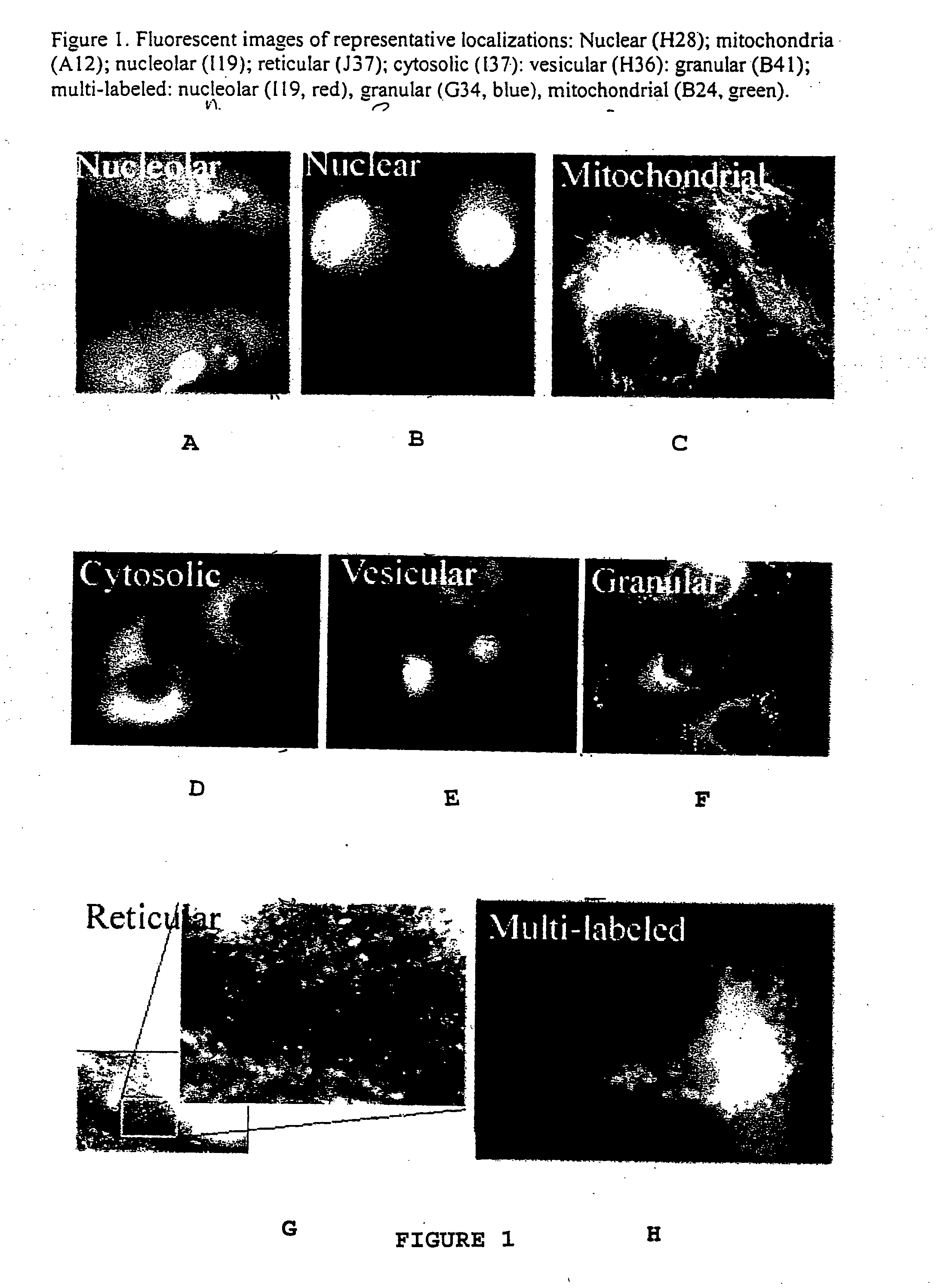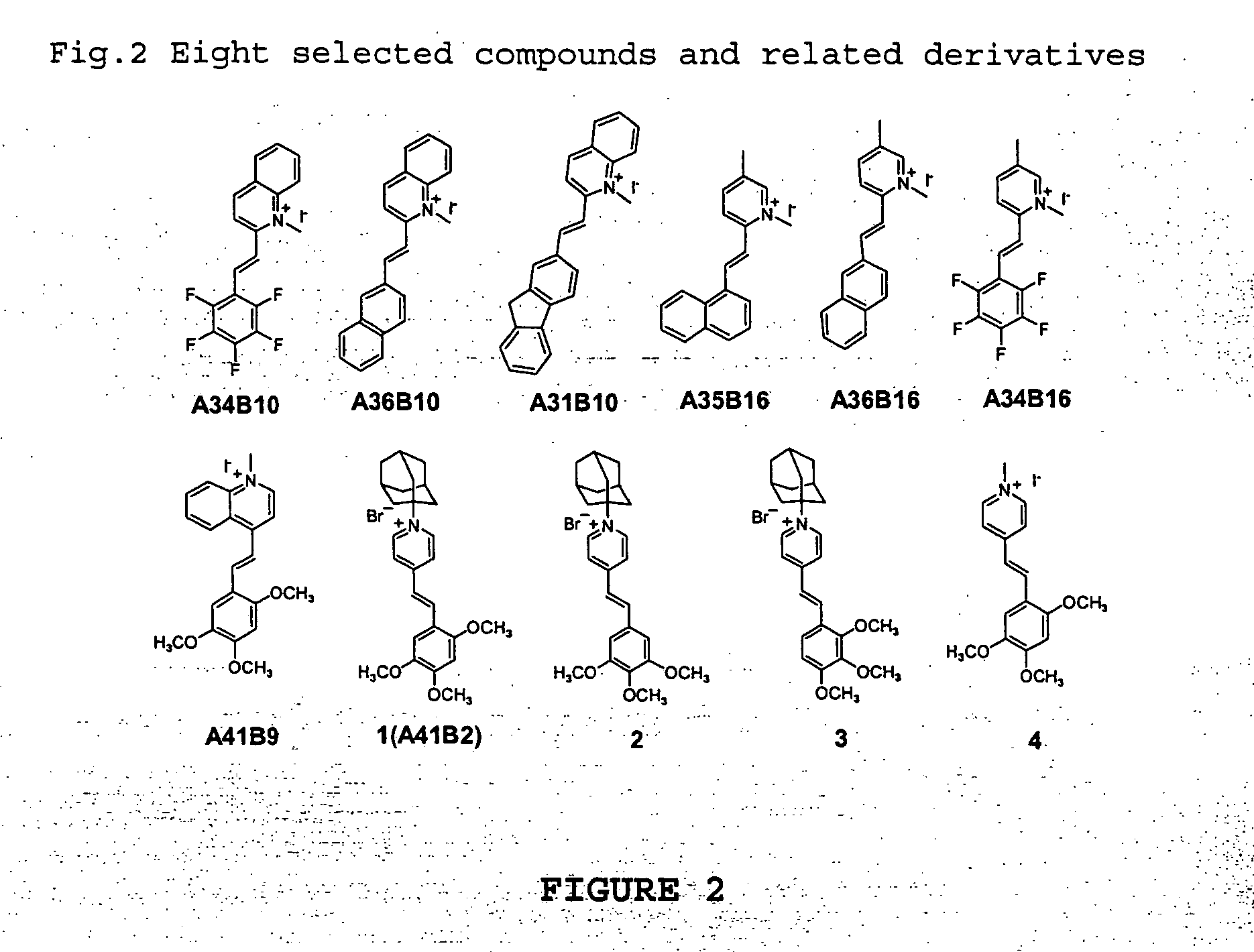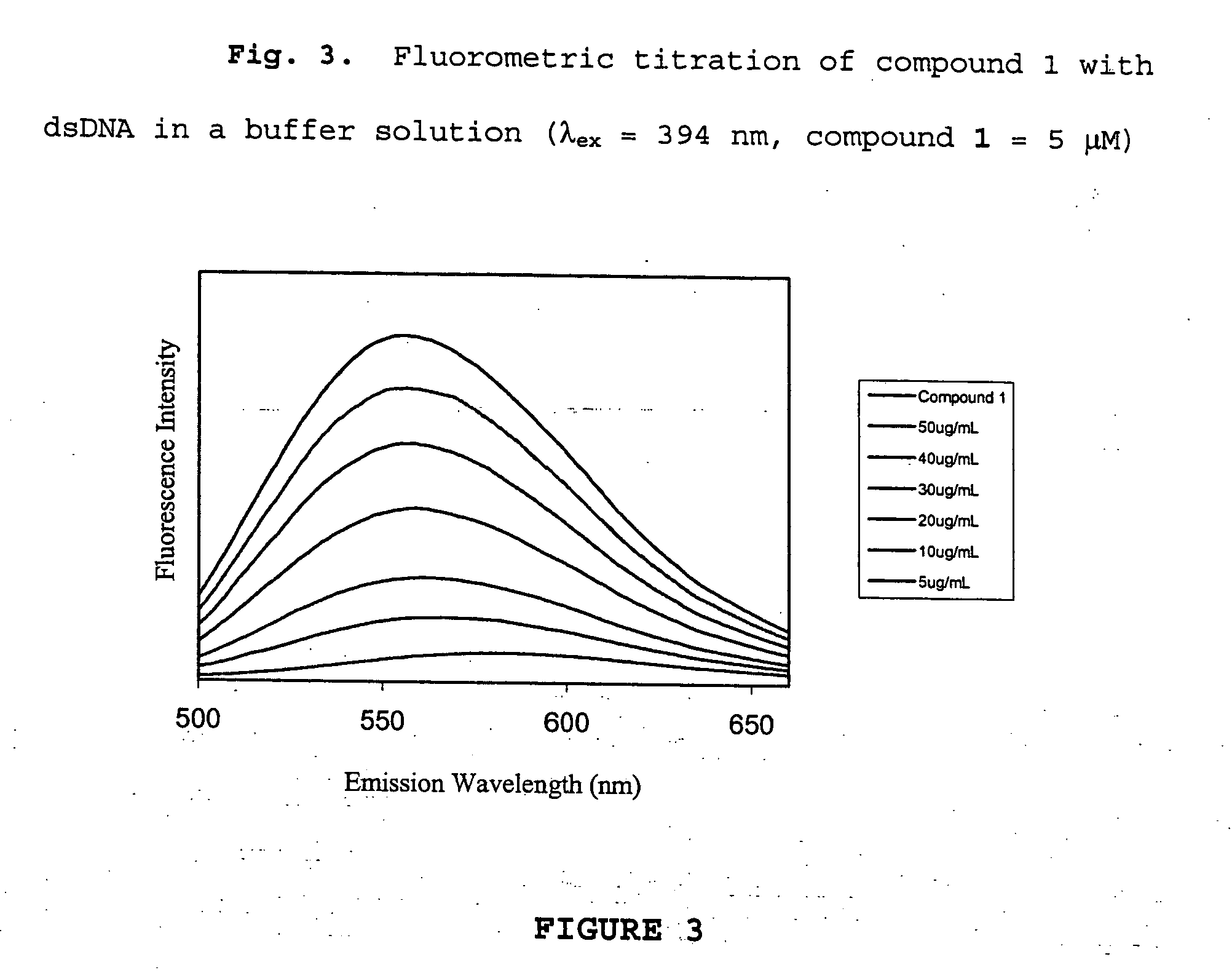Combinatorial fluorescent library based on the styryl scaffold
- Summary
- Abstract
- Description
- Claims
- Application Information
AI Technical Summary
Benefits of technology
Problems solved by technology
Method used
Image
Examples
Embodiment Construction
As used herein, alkyl, alkenyl and alkynyl carbon chains, if not specified, contain from 1 to 20 carbon atoms, preferably from 1 to 16 carbon atoms, and are straight or branched. Alkenyl carbon chains of from 1 to 20 carbon atoms preferably contain 1 to 8 double bonds; the alkenyl carbon chains of 1 to 16 carbon atoms preferably contain from 1 to 5 double bonds.
Alkynyl carbon chains of from 1 to 20 carbon atoms preferably contain 1 to 8 triple bonds, and the alkynyl carbon chains of 1 to 16 carbon atoms preferably contain 1 to 5 triple bonds. The alkyl, alkenyl, and alkynyl groups may be optionally substituted, with one or more groups, preferably alkyl group substituents that may be the same or different. As used herein, lower alkyl, lower alkenyl, and lower alkynyl refer to carbon chains having fewer than or equal to about 6 carbon atoms.
As used herein an alkyl group substituent includes halos, haloalkyl, preferably halo lower alkyl, aryl, hydroxy, alkoxy, aryloxy, alkoxy, alk...
PUM
 Login to View More
Login to View More Abstract
Description
Claims
Application Information
 Login to View More
Login to View More - R&D
- Intellectual Property
- Life Sciences
- Materials
- Tech Scout
- Unparalleled Data Quality
- Higher Quality Content
- 60% Fewer Hallucinations
Browse by: Latest US Patents, China's latest patents, Technical Efficacy Thesaurus, Application Domain, Technology Topic, Popular Technical Reports.
© 2025 PatSnap. All rights reserved.Legal|Privacy policy|Modern Slavery Act Transparency Statement|Sitemap|About US| Contact US: help@patsnap.com



